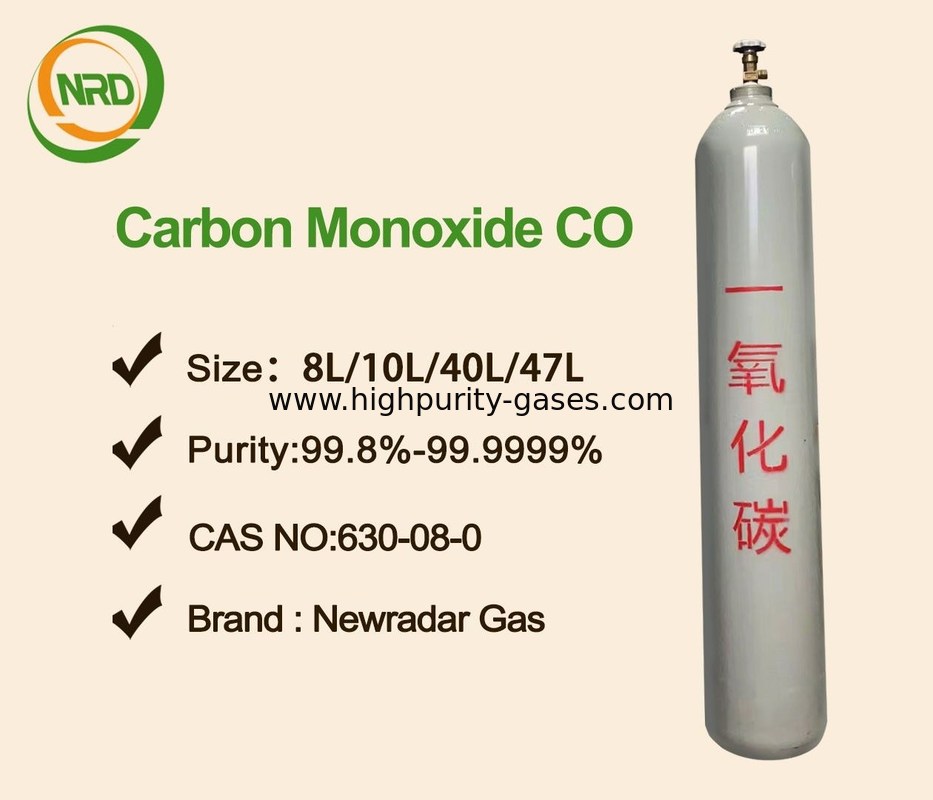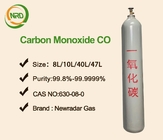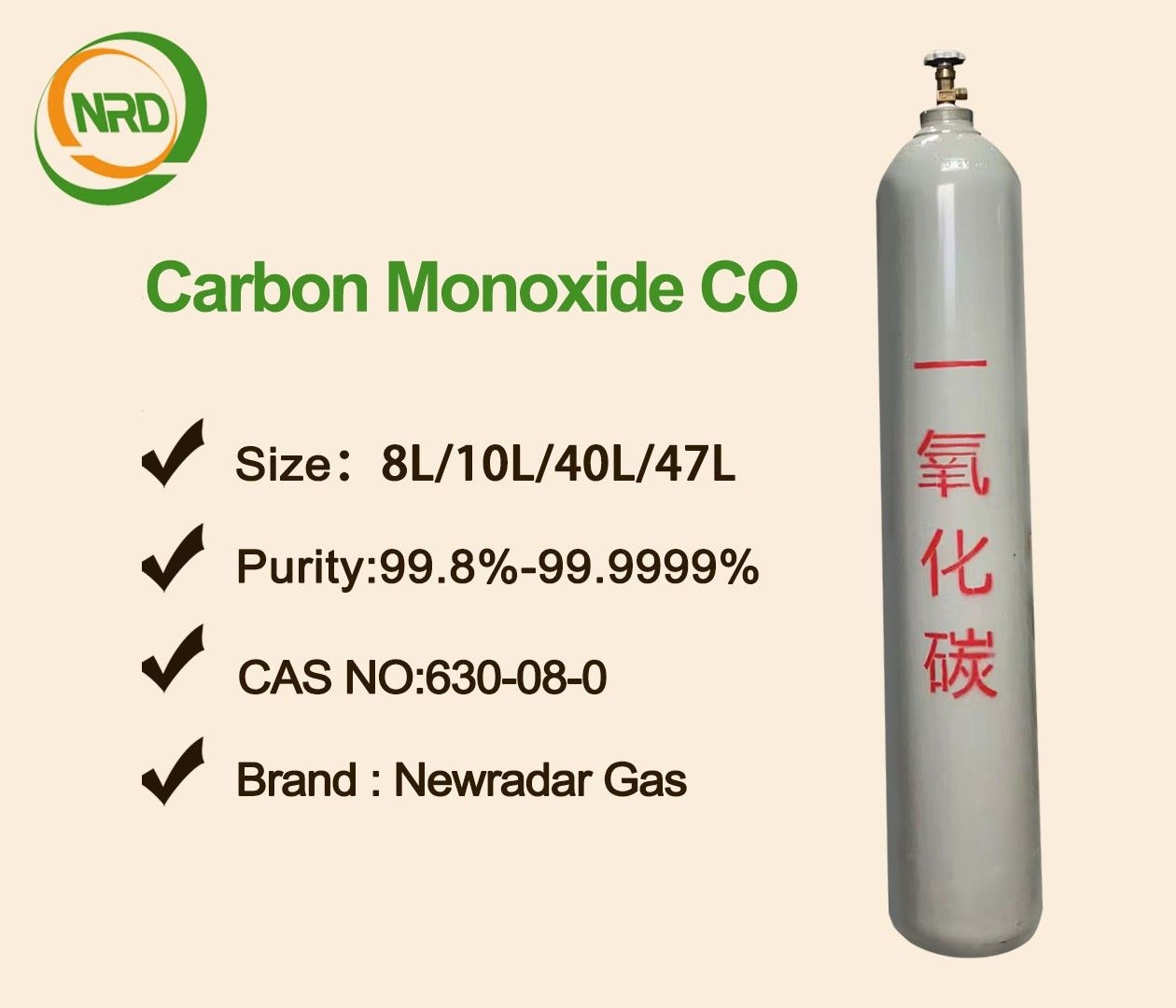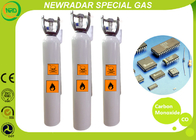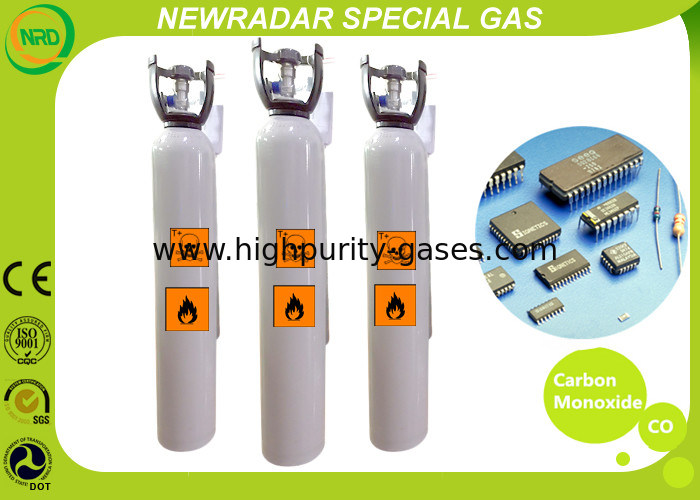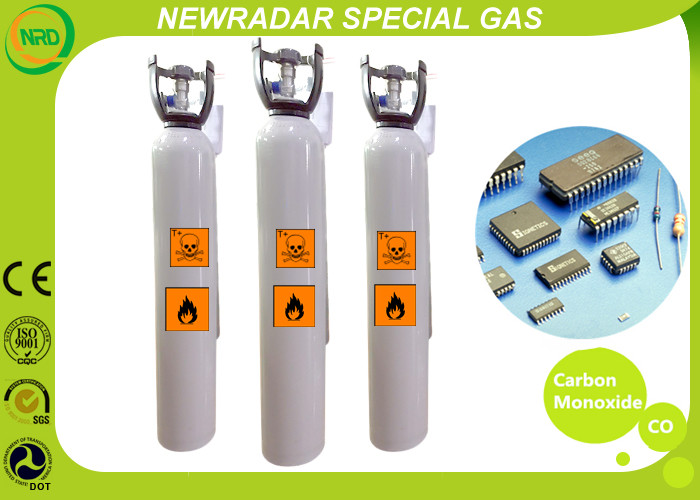Metallurgy Carbon Dioxide Flammable Colorless Gas Industrial Grade
carbon monoxide co safety data sheet MSDS.output.p...
Description:
Electronic Gases Carbon Monoxide is a colorless, odorless, flammable toxic gas. It is a chemical asphyxiant and acts toxically by combining with the hemoglobin of the red blood cells to form the stable compound carbon monoxide-hemoglobin. If inhaled, concentrations of 0.4 percent in air can prove fatal in less than one (1) hour, while inhalation of high concentrations can cause sudden collapse with little or no warning. Carbon Monoxide is stable with respect to decomposition.
Carbon Monoxide is used in metallurgy, manufacturing acids, chemical industry, lasers and laboratory R & D. Material Safety Data Sheets (MSDS) are available for Carbon Monoxide and should be used as guidelines in regard to first aid, methods of storage, handling and general use of Carbon Monoxide.
Contact with the liquid can cause severe frostbite. Less dense than air. Easily ignited and a flame can flash back to the source of a leak very easily. Burns with a violet flame. Under prolonged exposure to fire or intense heat the containers may rupture violently and rocket. CARBON MONOXIDE is used in organic synthesis, metallurgy, and a fuel.
Contact of very cold liquefied gas with water may result in vigorous or violent boiling and extremely rapid vaporization. If the water is hot, a liquid "superheat" explosion may occur. Pressures may build to dangerous levels if the liquid contacts water in a closed container [Handling Chemicals Safely 1980]. Reacts explosively with bromine trifluoride at high temperatures or concentrations [Mellor 2, Supp. 1:166 1956]. The same is true for various oxidizers such as: chlorine dioxide, oxygen (liquid), peroxodisulfuryl difluoride. Reacts with lithium to give lithium carbonyl, which detonates violently with water, igniting the gaseous products [Mellor 2, Supp 2:84 1961]. Potassium and sodium metals behave similarly. Cesium oxide, iron(III) oxide, and silver oxide all react, in the presence of moisture, at ambient temperatures with carbon monoxide causing ignition, [Mellor, 1941, vol. 2, 487].
Toxic; Extremely Hazardous. Inhalation extremely dangerous; may be fatal. Contact with gas or liquefied gas may cause burns, severe injury and/or frostbite. Odorless, will not be detected by sense of smell.
Extremely flammable. May be ignited by heat, sparks or flames. Flame may be invisible. Containers may explode when heated. Vapor explosion and poison hazard indoors, outdoors or in sewers. Vapors from liquefied gas are initially heavier than air and spread along ground. Vapors may travel to source of ignition and flash back. Runoff may create fire or explosion hazard.
Specifications:
1. Physical properties
| Physical Constants |
| Chemical formula |
CO |
| Molecular weight |
28.010 |
| Specific volume @ +70°F (+21.1°C) |
13.81 ft3/lb, 0.86 m3/kg |
| Flammability range |
12.5% to 74.2% in air |
| Critical pressure |
507.47 psia, 34.99 bar |
| Critical temperature |
-220.4°F, -140.2°C |
| Specific gravity @ 70°F, 1 atm (Air=1) |
0.967 |
2. Typical technical data (COA)
| Maximum Impurities |
| COMPONENTS |
CONCENTRATION (ppm) |
| Carbon Dioxide (CO2) |
<10.0 |
| Hydrogen |
<1.0 |
| Iron Pentacarbony |
<0.5 |
| Nickel Tetracarbonyl |
<1.0 |
| Moisture (H2O) |
<1.0 |
| Nitrogen (N2) |
<10.0 |
| Oxygen (O2) |
<0.5 |
| THC (as Methane) (CH4) |
<0.5 |
| Cylinder Specifications |
Contents |
Pressure |
| Cylinder |
Valve Outlet Options |
SCF |
Liters |
PSIG |
BAR |
| 2A |
CGA350 |
DIS724 |
140 |
4000 |
2000 |
139 |
| 4A |
CGA350 |
DIS724 |
28 |
800 |
2000 |
139 |

Applications:
| 1 |
Carbon Monoxide is used in a variety of applications including silicon-nitride-over-silicon etch to increase selectivity, as a source of oxygen in oxidation , Metallurgy, And Manufacturing Acids. |
| 2. |
As a source of carbon in certain doping processes. Carbon Monoxide is a colorless, odorless, flammable toxic gas with a TLV of 25 ppm. |
| 3 |
Carbon Monoxide is stable with respect to decomposition. |

 Your message must be between 20-3,000 characters!
Your message must be between 20-3,000 characters! Please check your E-mail!
Please check your E-mail!  Your message must be between 20-3,000 characters!
Your message must be between 20-3,000 characters! Please check your E-mail!
Please check your E-mail! 

